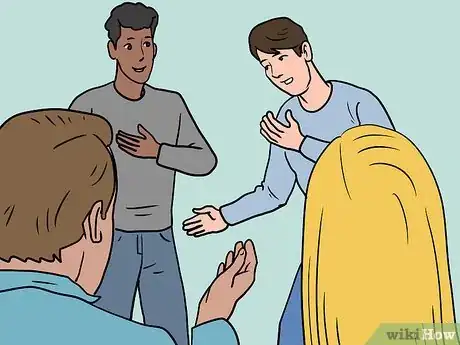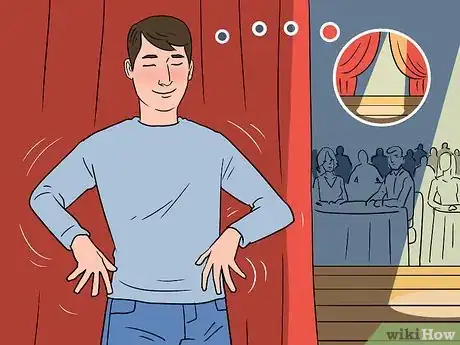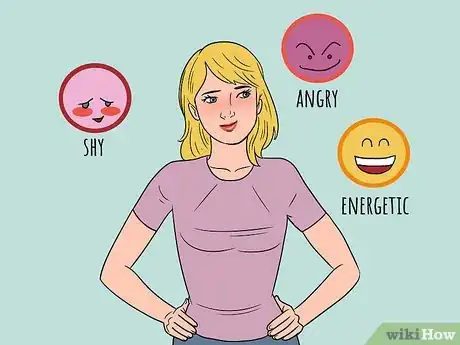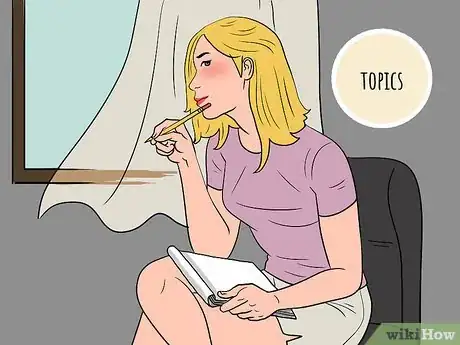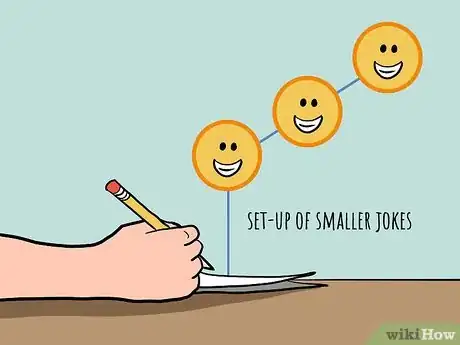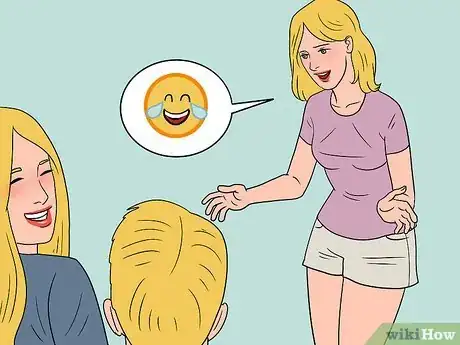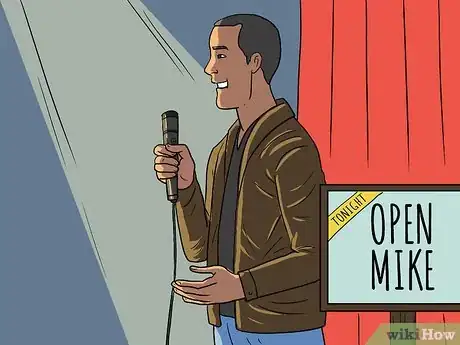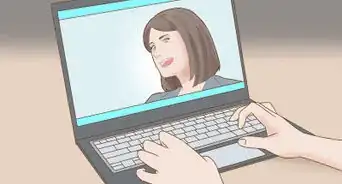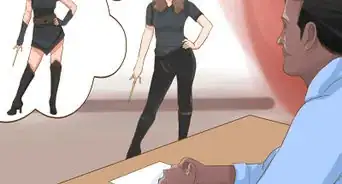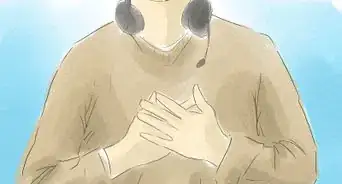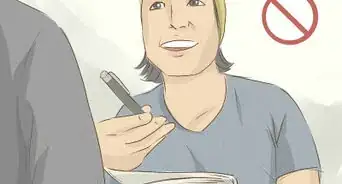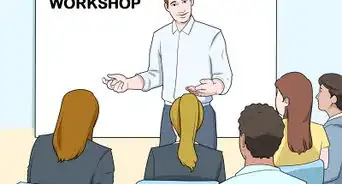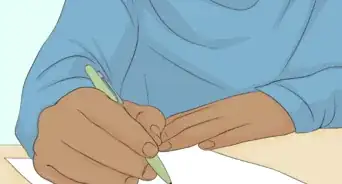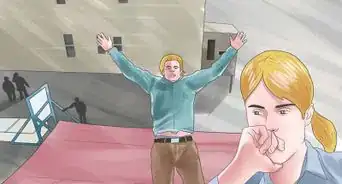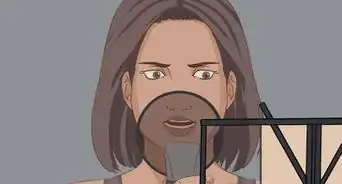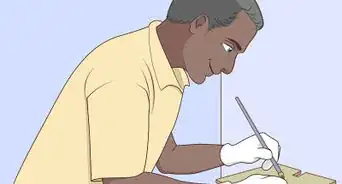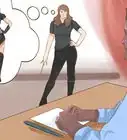This article was co-authored by Kendall Payne and by wikiHow staff writer, Christopher M. Osborne, PhD. Kendall Payne is a Writer, Director, and Stand-up Comedian based in Brooklyn, New York. Kendall specializes in directing, writing, and producing comedic short films. Her films have screened at Indie Short Fest, Brooklyn Comedy Collective, Channel 101 NY, and 8 Ball TV. She has also written and directed content for the Netflix is a Joke social channels and has written marketing scripts for Between Two Ferns: The Movie, Astronomy Club, Wine Country, Bash Brothers, Stand Up Specials and more. Kendall runs an IRL internet comedy show at Caveat called Extremely Online, and a comedy show for @ssholes called Sugarp!ss at Easy Lover. She studied at the Upright Citizens Brigade Theatre and at New York University (NYU) Tisch in the TV Writing Certificate Program.
There are 16 references cited in this article, which can be found at the bottom of the page.
wikiHow marks an article as reader-approved once it receives enough positive feedback. In this case, 88% of readers who voted found the article helpful, earning it our reader-approved status.
This article has been viewed 557,597 times.
Anyone can try their hand at doing comedy, but being a comedian takes perseverance, hard work, and—let’s not forget—a consistent ability to make people laugh. This article lists helpful advice on becoming a comedian, starting with tips on developing your comedic style and stage persona, moving on to pointers on coming up with great jokes, and finishing with guidance on getting comedy gigs. With a little luck and lots of laughs, you may be able to turn telling jokes into a career!
Steps
Expert Q&A
-
QuestionWhat's the easiest way to review my open mic sets if the venue doesn't allow recording?
 Kendall PayneKendall Payne is a Writer, Director, and Stand-up Comedian based in Brooklyn, New York. Kendall specializes in directing, writing, and producing comedic short films. Her films have screened at Indie Short Fest, Brooklyn Comedy Collective, Channel 101 NY, and 8 Ball TV. She has also written and directed content for the Netflix is a Joke social channels and has written marketing scripts for Between Two Ferns: The Movie, Astronomy Club, Wine Country, Bash Brothers, Stand Up Specials and more. Kendall runs an IRL internet comedy show at Caveat called Extremely Online, and a comedy show for @ssholes called Sugarp!ss at Easy Lover. She studied at the Upright Citizens Brigade Theatre and at New York University (NYU) Tisch in the TV Writing Certificate Program.
Kendall PayneKendall Payne is a Writer, Director, and Stand-up Comedian based in Brooklyn, New York. Kendall specializes in directing, writing, and producing comedic short films. Her films have screened at Indie Short Fest, Brooklyn Comedy Collective, Channel 101 NY, and 8 Ball TV. She has also written and directed content for the Netflix is a Joke social channels and has written marketing scripts for Between Two Ferns: The Movie, Astronomy Club, Wine Country, Bash Brothers, Stand Up Specials and more. Kendall runs an IRL internet comedy show at Caveat called Extremely Online, and a comedy show for @ssholes called Sugarp!ss at Easy Lover. She studied at the Upright Citizens Brigade Theatre and at New York University (NYU) Tisch in the TV Writing Certificate Program.
Standup Comedian Every comedian I know uses a recording app on their phone. They just turn it on before they get on stage, and then they put the phone in their pocket to record their set.
Every comedian I know uses a recording app on their phone. They just turn it on before they get on stage, and then they put the phone in their pocket to record their set. -
QuestionWhat's the best way to practice my standup?
 Kendall PayneKendall Payne is a Writer, Director, and Stand-up Comedian based in Brooklyn, New York. Kendall specializes in directing, writing, and producing comedic short films. Her films have screened at Indie Short Fest, Brooklyn Comedy Collective, Channel 101 NY, and 8 Ball TV. She has also written and directed content for the Netflix is a Joke social channels and has written marketing scripts for Between Two Ferns: The Movie, Astronomy Club, Wine Country, Bash Brothers, Stand Up Specials and more. Kendall runs an IRL internet comedy show at Caveat called Extremely Online, and a comedy show for @ssholes called Sugarp!ss at Easy Lover. She studied at the Upright Citizens Brigade Theatre and at New York University (NYU) Tisch in the TV Writing Certificate Program.
Kendall PayneKendall Payne is a Writer, Director, and Stand-up Comedian based in Brooklyn, New York. Kendall specializes in directing, writing, and producing comedic short films. Her films have screened at Indie Short Fest, Brooklyn Comedy Collective, Channel 101 NY, and 8 Ball TV. She has also written and directed content for the Netflix is a Joke social channels and has written marketing scripts for Between Two Ferns: The Movie, Astronomy Club, Wine Country, Bash Brothers, Stand Up Specials and more. Kendall runs an IRL internet comedy show at Caveat called Extremely Online, and a comedy show for @ssholes called Sugarp!ss at Easy Lover. She studied at the Upright Citizens Brigade Theatre and at New York University (NYU) Tisch in the TV Writing Certificate Program.
Standup Comedian There's really no replacement for the open mic. It's the tried-and-true option for comedians who want practice telling jokes to a live audience..
There's really no replacement for the open mic. It's the tried-and-true option for comedians who want practice telling jokes to a live audience.. -
QuestionCan watching comedy movies help me to improve?
 Community AnswerDefinitely. This is a great way to see the way some of the top professionals express humor.
Community AnswerDefinitely. This is a great way to see the way some of the top professionals express humor.
Warnings
- There will be many times when audiences don’t laugh or think that you’re funny. Know that each performance will be different and don’t dwell on nights that don’t go as expected.⧼thumbs_response⧽
- Never plagiarize or steal material from another comedian, or else you won’t get booked to perform.⧼thumbs_response⧽
- Don’t interact with people that try to heckle or interrupt you during your set.⧼thumbs_response⧽
References
- ↑ https://www.cnbc.com/2016/12/19/3-improv-comedy-skills-that-can-help-you-get-ahead-at-work.html
- ↑ https://www.theguardian.com/culture/2017/oct/04/learning-laughter-an-experts-guide-on-how-to-master-standup-comedy
- ↑ https://www.theguardian.com/culture/2017/oct/04/learning-laughter-an-experts-guide-on-how-to-master-standup-comedy
- ↑ https://www.canr.msu.edu/news/how_to_improve_your_sense_of_humor
- ↑ https://adaa.org/understanding-anxiety/social-anxiety-disorder/treatment/conquering-stage-fright
- ↑ Kendall Payne. Standup Comedian. Expert Interview. 3 April 2020.
- ↑ https://www.indiewire.com/2015/11/top-new-york-comedy-writers-tell-how-to-start-and-sustain-a-career-in-comedy-52182/
- ↑ http://www.goldcomedy.com/resources/5-ways-discover-comedy-persona/
- ↑ http://www.goldcomedy.com/resources/write-stand-up-comedy/
- ↑ http://www.goldcomedy.com/resources/comedy-writing-exercises/
- ↑ https://youtu.be/itWxXyCfW5s?t=231
- ↑ http://www.goldcomedy.com/resources/put-together-five-minute-set/
- ↑ http://www.goldcomedy.com/resources/put-together-five-minute-set/
- ↑ https://www.forbes.com/sites/danschawbel/2017/04/10/jim-gaffigan-you-have-to-constantly-practice-to-be-a-good-standup-comedian/?sh=72cd7bee203a
- ↑ https://youtu.be/itWxXyCfW5s?t=198
- ↑ Kendall Payne. Standup Comedian. Expert Interview. 3 April 2020.
- ↑ https://www.pastemagazine.com/articles/2016/01/the-beginners-guide-to-becoming-a-stand-up-comedia.html
- ↑ https://www.schooloflaughs.com/get-work-comedy-club-part-one/
- ↑ http://devincomedy.com/getting-booked-as-a-stand-up-comedian/
About This Article
To be a comedian, practice writing jokes every day so you get better and have lots of material to work with. When you write jokes, always start with a good set up to intrigue your audience. Then, deliver a punchline with a twist to make them laugh. For example, your set up could be "It's hard to explain puns to kleptomaniacs" and then the punchline could be "because they always take things literally." If you're struggling for material, try reading up on current events or getting out of the house to find inspiration. To learn how to do stand up, scroll down!
